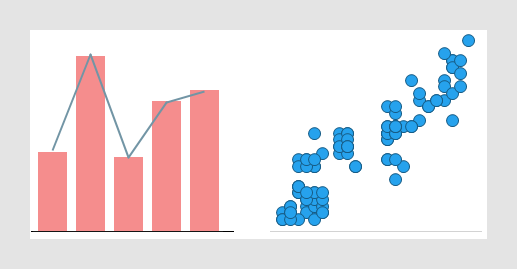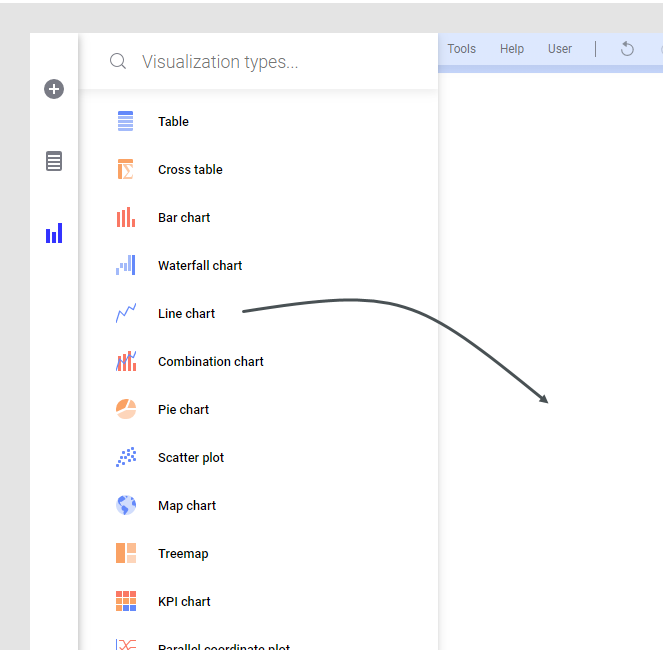
To represent data visually, many different types of visualizations are provided, all with different strengths for displaying the data in an informative way.
For example, there are visualizations suitable for making comparisons and investigating distributions, correlations or trends in the data as exemplified below. Whether the data is continuous or categorical, whether it should be aggregated, and whether one, two, three or more variables are to be represented, are also of importance when you decide what visualization to use.

When you add a visualization to an analysis, you can do it in three ways:
Start from the data
By selecting data columns you are interested in among the loaded data, you will get recommendations on visualizations based on these particular columns. And not just that, you will also get visualizations recommended to you, which show certain insights that have been discovered and might be valuable for you to know of. Such an insight could be that another, not selected data column, has a strong correlation to any of your selected columns. Then the visualization of interest can simply be dragged to the analysis page, and if needed, you can fine-tune it there.
Start from a visualization type
You can simply select the visualization type you want to use, and drag it to the analysis page. Once on the page, you can select which data columns you want to visualize, and how. This way you build the visualization from scratch.
Search for what you want to visualize
You can search for data you are interested in among existing content and also get recommendations on new visualizations that can be relevant. The visualizations can then be dragged to the analysis page.
No matter method used, you can at anytime modify the properties of the visualization. The properties to change can be anything from changing what data columns are visualized and how their data should be summarized to changing colors and fonts. You can even switch to another visualization type.
Get started
To add a visualization, either
Click Data
in analysis ![]() on the authoring bar, and in the opened flyout, select the data columns
you are interested in. Among the visualizations that are recommended,
drag the one you want to use to the analysis page, and explore it.
on the authoring bar, and in the opened flyout, select the data columns
you are interested in. Among the visualizations that are recommended,
drag the one you want to use to the analysis page, and explore it.

Click Visualization
types ![]() on
the authoring bar, and from the opened flyout, drag the visualization
type you want to use to the analysis. Then modify the default settings
to make the visualization look the way you like.
on
the authoring bar, and from the opened flyout, drag the visualization
type you want to use to the analysis. Then modify the default settings
to make the visualization look the way you like.

Click Find
 on the menu bar. Type, in the opened search
field, what you want to visualize, and let us suggest visualizations
for the matches found. For example, if you type the names of data
columns or data values you want to explore, visualizations are suggested
as shown in the image below. Then click or drag the one you are interested
in to the analysis page, and explore it.
on the menu bar. Type, in the opened search
field, what you want to visualize, and let us suggest visualizations
for the matches found. For example, if you type the names of data
columns or data values you want to explore, visualizations are suggested
as shown in the image below. Then click or drag the one you are interested
in to the analysis page, and explore it.

For more information, see Find.